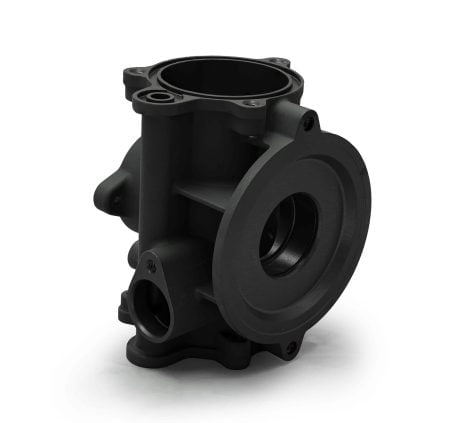With over 40 years experience in the industry we have worked with and developed excellent relationships with a number of other companies to be able to provide a wide range of outside processes. These include electroplating, e-coat, powder coating, heat treatment, grinding & polishing and anodising. All our key suppliers are ISO 9001 accredited and performance is monitored through our own quality system.
Metal finishing is when a coating is applied to the top of the metal surface. There are many different types of metals that everyone uses on a daily basis and because most of these are naturally occurring metals, they need an extra layer of protection from use. All metals have weaknesses and by adding a finishing for them, they will last for longer and will be able to perform well, regardless of the application. Metal finishings can be used either to polish, clean or improve a surface.
To the side is an example of a switch bezel, featuring outside processing. This part was machined from solid aluminium before being polished and then satin chrome plated for a smart high quality finish.

There are many different applications in which metal finishing can be used:

A high pressure stream of material is used to leave a smooth finish. This method is also ideal when preparation is needed for platings and coatings. This is the most cost-effective solution and can be utilised on a wide number of materials.
This method removes blemishes whilst giving the part a certain look, examples including kitchen and home appliances. It creates parallel lines, usually on stainless steel.
This method buffs the surface to remove blemishes of the part. This method is used as an alternative to electropolishing. This is ideal for applications that require a high quality aesthetic.
As the name suggests, this method forms a case around the part to protect it from abrasions and high pressures.
Similar to electroplating, this method works by sending an electric current through the solution. Electrically charged paint particles ensure a primer is created over the part. Again, these are ideal for corrosion resistance.
The metal is placed in a copper or nickel solution, so that there is a catalytic reduction which breaks up the ions in the material. This makes it ideal for applications that need resistance to corrosion.
This finishing passes an electrical current through a liquid which contains ions. The current attracts the ions to the surface of the metal, giving it a layer of protection. This technique is difficult to do and requires specialist expertise.
This method is the opposite to electroplating, so it instead removes the ions from the part. The electrical current is still supplied through the solution, which removes any defects. This is ideal for the aesthetics of the part.
This is the method that is ideal for hardened steel and other hard materials. It smoothes out the surface by using a metal grinding machine.
Submerged in chemicals such as nitric or citric acid, this method removes corrosive particles. Iron reacts with the environment to create rust, but this method creates a protective layer around the part preventing this.
Using a spray gun applies a powder coating to the part, which is typically stronger than a liquid coating. Once coated, the part is heated to solidify the coating to the part.